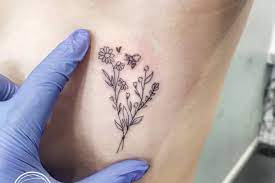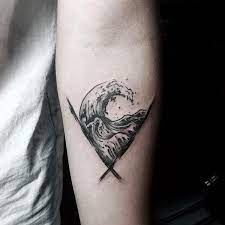
Thin needle Tattoos have quickly become a trend among artists and clients. It is commonly seen as black and gray with fine-lined outline tattoos. Thicker lines, such as three or five-round liners, will cause your tattoo to bleed, smudge, and fade faster than with thin ones. Finding an artist specializing in this style and with a portfolio of healed Tattoos to show is important; its placement should also keep it from moving or exposing it to direct sunlight.
Line Work
No matter if it’s simple or intricate designs, successful Tattoos begin with accurate lines. Finding an artist specializing in thin-line work is of utmost importance to achieve results you are happy with. Artists specializing in this style use a single-needle machine to produce fine, delicate lines that look nearly as authentic as their original artworks, using techniques such as stippling and dotwork for more traditional art forms. Tattoo artists have many options when selecting needle configurations for line work. Different codes represent various configurations; for instance, RL stands for round liner, which creates small circular formations often used as lining needles. Other choices are F for flat hands, M1 weaved magnum, and RS round shader.
Shading
Tattoo shading is no easy task; it requires the artist to understand and perfect a technique that produces their desired effects and execute it with skill and precision. Practicing on fake skin, also known as pigskin, can help artists develop this skill more quickly. It simulates actual human bodies, providing insight into how different pressure and voltage settings impact machines, needles, and hand movements. Different needle types can be used for shading depending on the design and desired result. A fine liner may be sufficient for small areas; for larger ones, however, flat shaders (also called weaved mags) often prove superior as they allow thicker lines without looking shaky due to being soldered together but featuring an opening between needles to maximize pigment saturation.
Color
Tattoo needles come in different configurations that affect their use for tattooing, ultimately affecting how a client will receive his or her artwork. Understanding these differences between needle types is the key to choosing which work will be done on someone’s body. The diameter or gauge of a needle determines the size and location of punctures made in your client’s skin. Smaller hands offer narrower ink flows that make them suitable for line work, while larger needles offer broader flows suited for shading and color work. Round liners are circular groupings of needles designed to produce crisp, clean lines on your client’s skin. They’re ideal for dot work, geometry, or any bold linework requiring precise lines – whether dotwork, geometry, or bold line work is needed. Round shaders are similar yet have more space between each needle for filling and shading needs, including bold linework (traditional or new school). Solder placement also affects whether tight or flexible hands are.
Aftercare
Aftercare of thin needle Tattoos is essential in ensuring they heal successfully. Once your artist applies an antibiotic ointment and wraps the area, follow their instructions regarding when and how long to keep the dressing on. After removing the bandage, wash three or four times daily with cold-to-lukewarm water and fragrance-free soap; gentle patting dry rather than rubbing the skin should suffice. Care must be taken to avoid irritation that could lead to infection when cleaning a new tattoo. Moisturizers should also be applied regularly – many tattoo artists recommend their aftercare products that enhance color while providing relief and healing without irritating skin or clogging pores. If you sweat often or work in an incredibly filthy environment, your tattoo may need to be cleaned more frequently and moisturized after each washing session. Be sure to add moisturizer when possible after washing your skin.

